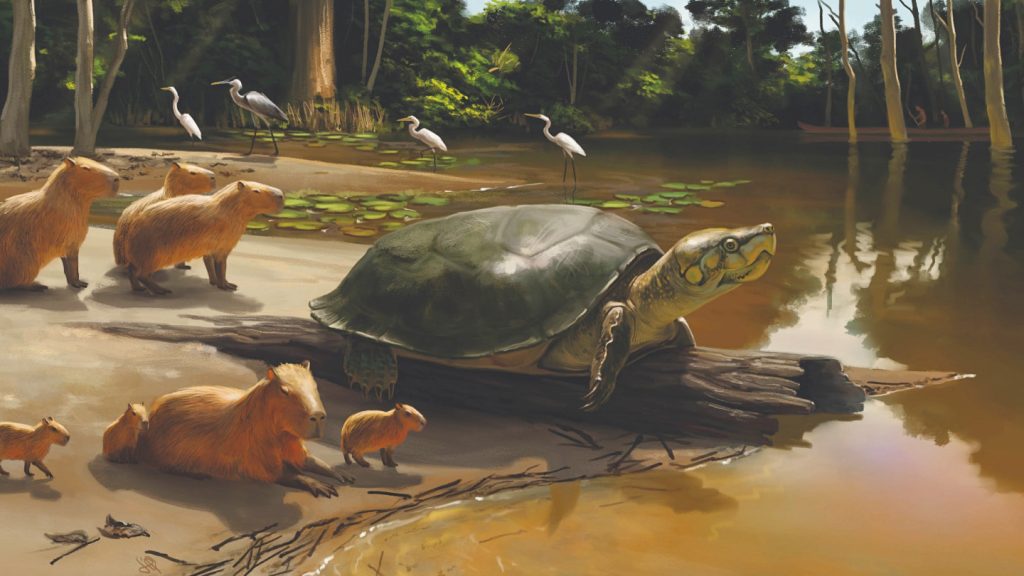Researchers made an exciting discovery of a fossilized jawbone of a giant turtle named Peltocephalus maturin in the Brazilian Amazon, estimated to have lived between 40,000 and 9,000 years ago. The size and shape of the jawbone, along with comparisons to living and extinct turtles, led to the determination that it was a new species close to the modern big-headed Amazon River turtle. The new species was named after author Stephen King’s cosmic turtle character and was estimated to have a shell nearly 2 meters long, making it one of the largest freshwater turtles to ever exist. The discovery is unique as giant turtles of similar size lived much earlier than Peltocephalus maturin, and it is possible that humans encountered these enormous turtles during that time in the Amazon.
The discovery of Peltocephalus maturin sheds light on the evolution of giant turtles, a phenomenon that has occurred across various turtle groups and time periods. Researchers have found no evidence to suggest that environmental temperatures influenced the body size of turtles, which leaves the driving force behind the evolution of these giants still unknown. The peculiarities of Peltocephalus maturin, such as its relatively recent existence compared to other giant turtles, make it a subject of interest for studying turtle body size evolution. The fact that humans could have interacted with these immense turtles adds a unique dimension to the understanding of ancient ecosystems in the Amazon.
The fossilized remains of Peltocephalus maturin reveal it to be a species much larger than its living relative, the big-headed Amazon River turtle. The estimated shell length of nearly 2 meters places it among the largest turtles ever known and the second largest freshwater turtle. This finding challenges previous notions of the evolutionary patterns of giant turtles by showcasing a species that existed much more recently than others of its size. The study of Peltocephalus maturin provides valuable insight into the diversity of turtles that have inhabited the Amazon region over time.
The research into Peltocephalus maturin showcases the unique evolutionary history of giant turtles and raises questions about the factors that may have influenced their body size over time. The discovery of such a massive turtle in relatively recent times provides an opportunity to explore the interactions between ancient humans and these giant reptiles, offering new perspectives on the ecology of the Brazilian Amazon thousands of years ago. Further studies into the evolutionary patterns of turtles may help unravel the mysteries behind the emergence of these enormous creatures and their significance in past ecosystems. Overall, the finding of Peltocephalus maturin highlights the importance of fossil discoveries in uncovering the rich history of earth’s biodiversity.


